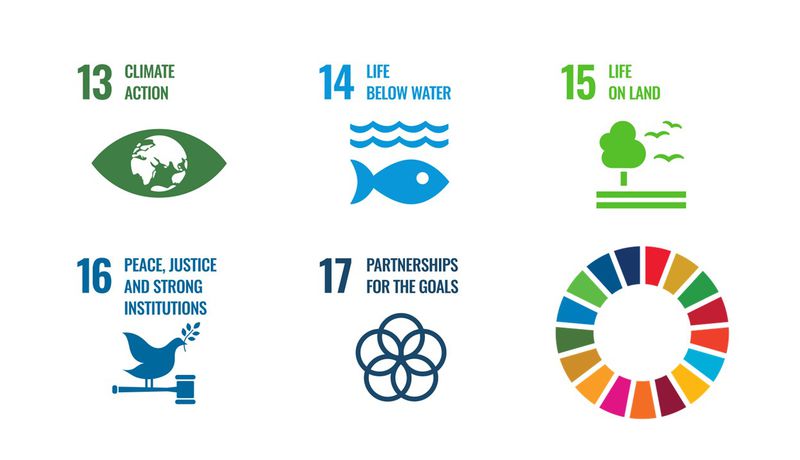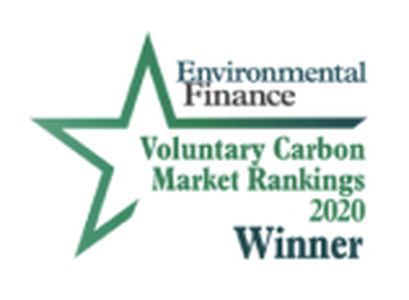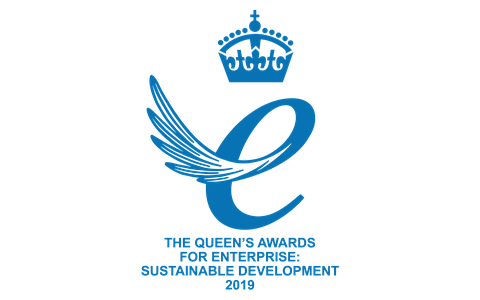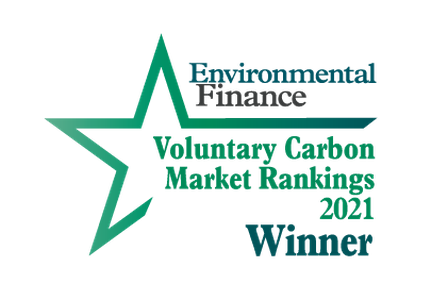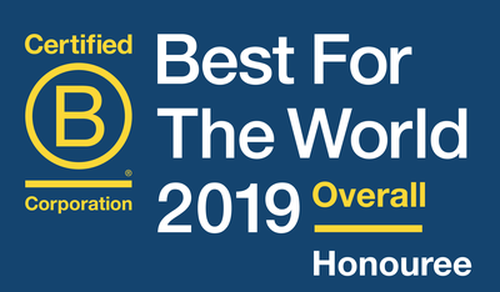Positive impact for people and biodiversity
By supporting high quality carbon finance projects, businesses can deliver essential emission reductions and support low carbon sustainable development in areas most in need.
Alongside verified emissions reductions, additional project impacts, generally those aligned with the UN Sustainable Development Goals (SDGs), continue to be strong motivating factors for corporates.
Read on to discover how carbon finance project activities align to each of the seventeen goals. First, goals 1 through 6 which focus on people:
Goal 1. End poverty in all its forms everywhere
More than 700 million people still live in extreme poverty and are struggling to fulfil the most basic needs like health, education, and access to water and sanitation. The overwhelming majority of people living on less than $1.90 a day live in Southern Asia and sub-Saharan Africa and they account for about 70% of the global total of extremely poor people. Carbon finance projects support households and communities to develop sustainable economic livelihoods that can help them make the move out of poverty:
- Provide agricultural training to improve the quality and productivity of land and boost crop yields, reducing food expenditure and/or generating surplus to sell to market, while reducing slash and burn techniques (Target 1.5)
- Provide training on alterative income generating activities to improve and diversify income e.g. bee keeping for honey production, production of cash crops such as vanilla, cloves, raffia and cacao, therefore reducing dependence on extractive activities (Target 1.5)
- Support communities and local businesses to develop routes to market to ensure fair and full payment to ensure sustainable land use is economically attractive to forest destruction (Target 1.5)
Goal 2. End hunger, achieve food security and improved nutrition and promote sustainable agriculture
Extreme hunger and malnutrition remains a barrier to sustainable development. Hunger and malnutrition mean less productive individuals, who are more prone to disease and thus often unable to earn more and improve their livelihoods. There are nearly 800 million people who suffer from hunger worldwide, the vast majority in developing countries. Carbon finance projects support households and communities to increase food security and diversify food production, building local capacity and resilience to climate change:
- Improve food security through training on conservation farming techniques to improve the quality and productivity of land and increase crop yields, removing the need for shifting cultivation and slash and burn techniques (Targets 2.3 and 2.4)
- Diversify food supply with training and best practice sharing on alternative crops, livestock rearing, and planting fruit and nut trees to ensure sustainable land use is more economically attractive to forest destruction (Targets 2.3 and 2.4)
Goal 3. Ensure healthy lives and promote well-being for all at all age
Despite great strides in improving people’s health and well-being in recent years, inequalities in health care access still persist. Each year, more than six million children die before their fifth birthday, and only half of all women in developing regions have access to the health care they need. Carbon finance projects support households and communities to improve standards of health and well-being, promoting increased productivity and fewer incidences of illness and disease:
- Distribute fuel-efficient cookstoves to reduce levels of indoor air pollution and the pressure on local forests for firewood (Targets 3.4 and 3.9)
- Construct and equip a medical centre, enhancing community access to essential medical services (Target 3.8)
- Implement an immunisation programme to protect children against common childhood diseases (Targets 3.2, 3.3, and 3.8)
Goal 4. Ensure inclusive and equitable quality education and promote lifelong learning opportunities for all
Education is the key that will allow many other Sustainable Development Goals to be achieved. When people have access to get quality education they can break from the cycle of poverty. Education therefore helps to reduce inequalities, promote gender equality, and empowers people to live healthier and more sustainable lives. Carbon finance projects support households and communities to access training programmes to improve existing and develop new skills and knowledge:
- Enable the provision of additional study groups and educational youth club programmes to raise awareness on the importance of forest protection (Target 4.7)
- Provide training on biodiversity assessments to empower and equip communities with the necessary skills to conserve their local forests (Target 4.7)
- Strengthen business capacity and financial security through community micro-enterprise programmes and training for improved livelihoods to reduce community dependence on extractive income generating activities (Targets 4.4 and 4.7)
Goal 5. Achieve gender equality and empower all women and girls
While the world has achieved progress towards gender equality and women’s empowerment under the Millennium Development Goals, women and girls continue to suffer discrimination and violence in every part of the world. Providing women and girls with equal access to education, health care, decent work, and representation in political and economic decision-making processes will fuel sustainable economies and benefit societies at large. Carbon finance projects empower women and girls to play an active role in their household and community, with equal access to training and leadership roles:
- Distribute fuel-efficient cookstoves to reduce the pressure on local forests for firewood, and offer women more time to spend with family or on income generating activities as less time is spent on fuel collection and cooking (Targets 5.5 and 5.a)
- Offer equal access to training and leadership to enhance women’s capacity outside traditional household roles, including taking an active role in forest conservation and restoration (Targets 5.5 and 5.a)
- Increase women’s participation in economic activities, stimulating greater investment in children’s education, and encouraging the adoption and best practice sharing of sustainable livelihood alternatives (Target 5.5)
Goal 6. Ensure availability and sustainable management of water and sanitation for all
Access to water, sanitation and hygiene is a human right, yet billions are still faced with daily challenges accessing even the most basic of services. Around 1.8 billion people globally use a source of drinking water that is fecally contaminated, and roughly 2.4 billion people lack access to basic sanitation services, such as toilets or latrines. By 2050, at least one in four people is likely to live in a country affected by chronic or recurring shortages of fresh water. Carbon finance projects support households and communities to access improved water and sanitation services, reducing incidences of illness and disease:
- Provide improved hand washing facilities to households and schools to improve domestic hygiene and prevent disease (Target 6.2)
- Implement water, sanitation and hygiene (WASH) workshops for school children to improve hygiene and sanitation awareness (Target 6.2)
- Distribute water filters to households, providing access to clean, safe drinking water (Target 6.1)
- Protect and enhance water ecosystems by empowering communities to conserve and restore forested areas (Target 6.6)
Goal 7. Ensure access to affordable, reliable, sustainable and modern energy for all
Globally, 1.3 billion people have no access to electricity, 82% of whom live in Sub-Saharan Africa and South Asia. In these areas, dependence on solid fuels is costly, puts pressure on surrounding ecosystems, and releases carbon monoxide and black carbon particulates when burned. Our everyday lives depend on reliable and affordable energy services to function smoothly and to develop equitably. Lack of access to energy supplies and transformation systems is a constraint to human and economic development. Carbon finance projects support households and communities to develop and gain access to clean and reliable forms of energy, reducing expenditure and providing opportunities for income generation:
- Distribute solar lamps to households to offer light for evening study and income generating activities, reducing the pressure on local forests for firewood (Target 7.1)
- Electrify primary health centres to enhance quality of medical care with reliable fans and refrigerators (Targets 7.1 and 7.3)
- Install solar generator systems across local community centres, enabling extended activities outside daylight hours, including programmes to raise awareness on the importance of forest protection (Targets 7.1 and 7.2)
- Support new renewable energy installations including wind and solar farms, and geothermal and hydro power plants, to help displace electricity drawn from fossil fuel power stations (Targets 7.1, 7.2 and 7.3)
Goal 8. Promote sustained, inclusive and sustainable economic growth, full and productive employment and decent work for all
Roughly half of the world’s population still lives on the equivalent of about US$2 a day. In addition to creating jobs, conditions need to be improved for some 780 million women and men who are working, but not earning enough to lift themselves and their families out of poverty - poverty eradication is only possible through stable and well-paid jobs. Carbon finance projects provide households and communities with access to training and employment opportunities to strengthen business capacity and financial security:
- Strengthen business capacity and financial security through community micro-enterprise programmes and cooperatives to reduce dependence on extractive activities (Target 8.4)
- Provide training to improve and diversify income, enhancing existing skills and develop new skills to encourage the adoption of viable alternatives to previously destructive behaviours (Target 8.4)
- Provide access to a broad range of job opportunities for local populations to encourage new economic opportunities that avoid the degradation of the natural environment (Target 8.5)
- Increase demand for local products and services, prioritise local partnerships, and provide access to appropriate finance (where required) to promote sustainable economic growth (Target 8.10)
Goal 9. Build resilient infrastructure, promote inclusive and sustainable industrialization and foster innovation
Investments in infrastructure – transport, irrigation, energy and information and communication technology – are crucial to achieving sustainable development and empowering communities in many countries. Inclusive and sustainable industrial development is the primary source of income generation, allows for rapid and sustained increases in living standards for all people, and provides the technological solutions to environmentally sound industrialisation. Carbon finance projects support households and communities to access fundamental amenities to support improved and sustainable livelihoods:
- Invest in community infrastructure including the rehabilitation and construction of community schools, medical clinics and water points (Target 9.1)
- Deliver access to electricity through the distribution of solar lights, solar PV and charging ports, enabling use of digital technology for households, schools and business, and reducing the pressure on local forests as a source of fuel (Targets 9.1 and 9.4)
- Promote the use of digital technology such as GPS trackers and tablet computers to facilitate forestry project implementation and the capture and sharing of monitoring data (Target 9.c)
Goal 10. Reduce inequality within and among countries
Inequalities based on income, sex, age, disability, sexual orientation, race, class, ethnicity, religion and opportunity continue to persist across the world, within and among countries. There is growing consensus that economic growth is not sufficient to reduce poverty if it is not inclusive and if it does not involve the three dimensions of sustainable development – economic, social and environmental. Carbon finance projects support households and communities to access opportunities to improve their standard of living, whether that be related to health, income, food security, education or energy access:
- The premise of carbon finance is to direct funds to the most effective global projects to deliver emission reductions and sustainable development outcomes. Largely based in less economically developed countries where communities depend on the natural environment for their livelihoods, these projects present an effective way to engage and support communities on developing improved livelihoods that avoid environmental degradation (Target 10.b)
- Project activities that are targeted toward low income communities, with a focus on reducing expenditures and improving and diversifying income, skills and opportunities for employment (Target 10.b)
Goal 11. Make cities and human settlements inclusive, safe, resilient and sustainable
Over half of humanity—3.5 billion people—live in cities today, and this number will continue to grow. Cities have great potential to enable people to advance socially and economically, but inequality is a big concern. 828 million people live in slums, energy consumption and pollution are rising, and many cities are vulnerable to climate change. Carbon finance projects support households and communities to access fundamental amenities and adopt improved technologies to both improve livelihoods and reduce environmental impact:
- Construct and/or upgrade local community health centres and services and provide personnel training (Target 11.1)
- Improve community access to basic services like healthcare, lighting, education, etc. (Target 11.1)
- Distribute fuel-efficient cookstoves to reduce air quality impacts, especially in towns and cities (Target 11.6)
Goal 12. Ensure sustainable consumption and production patterns
A growing population is increasing the demand for already constrained natural resources. Sustainable consumption and production is fundamental to a sustainable and equitable future by “doing more and better with less”: increasing economic gains and quality of life, while reducing resource use and degradation. Carbon finance projects engage households and communities to realise the value of protecting ecosystems and turn this into an economically viable way of life:
- Educate local communities, particularly youths on the importance of environmental conservation to ensure natural resources are conserved for the long-term (Target 12.8)
- Provide training on improved production practices that avoid destruction of natural resources e.g. conservation agricultural practices to improve land productivity (Targets 12.2, 12.8, 12.a)
- Support communities to adopt viable alternatives to improve and diversify income e.g. establish micro-enterprises and improve access to markets, to reduce dependence on extractive activities (Target 12.8)
- Enhance access to more efficient technologies to reduce community impact on the environment e.g. fuel-efficient cookstoves to reduce emissions and pressure on local forests for firewood (Target 12.2)
Goal 13. Take urgent action to combat climate change and its impacts
People are already experiencing the significant impacts of climate change, including changing weather patterns, rising sea level, and more extreme weather events. Without action, the world’s average surface temperature is projected to rise over the 21st century and is likely to surpass three degrees Celsius this century. This will further increase the severity of climate change impacts, which disproportionately affects the poor and most vulnerable. The premise of all carbon finance projects is to direct funds to the most effective global projects to deliver emission reductions and sustainable development outcomes to help combat climate change and promote a sustainable and equitable future for all:
- Support communities to build capacity and resilience, strengthening their ability to adapt to the impacts of climate change e.g. crop diversification, fire suppression (Target 13.1)
- Encourage tree planting activity to improve local ecosystem services e.g. enhance soil fertility, protect crops from scorching, reduce threat of flooding through water storage (Target 13.1)
- Enhance the capacity for communities in less economically developed countries – women, youth and the marginalised – to understand the impacts of climate change, to manage its impacts, and develop sustainable livelihoods that will allow communities to thrive for the long-term (Target 13.3)
Goal 14. Conserve and sustainably use the oceans, seas and marine resources for sustainable development
Rainwater, drinking water, weather, climate, coastlines, food, and oxygen are all ultimately provided and regulated by the sea. Increasing global temperatures, pollution and over exploitation are severely impacting the health, mechanics and future viability of water ecosystems. Carbon finance projects support households and communities to develop sustainable economic livelihoods that can help them make the move out of poverty:
- Establish agreements with community councils to improve local management of fisheries (Targets 14.2 and 14.4)
- Reduce deforestation rates and minimise land-use change to avoid impacts on water systems (Target 14.2)
- Improve the quality of water ecosystems by empowering communities to restore forested areas (Target 14.2)
- Develop alternative food sources to prevent overexploitation of marine life (Target 14.4)
Goal 15. Protect, restore and promote sustainable use of terrestrial ecosystems, sustainably manage forests, combat desertification, and halt and reverse land degradation and halt biodiversity loss
From the air we breathe, to the water we drink, to the food we eat–forests sustain us. Around 1.6 billion people directly depend on forests for their livelihood, and forests are home to more than 80% of all terrestrial species of animals, plants and insects. Carbon finance projects engage households and communities to realise the value of protecting ecosystems and turn this into an economically viable way of life:
- Support communities to build sustainable livelihoods to contribute to the protection and restoration of forested areas and species populations (Targets 15.1 and 15.2)
- Promote sustainable land use practices and tree planting activity to improve soil fertility and reduce erosion (Targets 15.1 and 15.2)
- Enable communities to secure land ownership, promoting a long-term view to sustainable land management that avoids slash and burn practices (Target 15.1)
Goal 16. Promote peaceful and inclusive societies for sustainable development, provide access to justice for all and build effective, accountable and inclusive institutions at all levels
Peaceful, just and inclusive societies are necessary to achieve the Sustainable Development Goals. This requires effective and inclusive public institutions that can deliver quality education and healthcare, fair economic policies and inclusive environmental protection. Carbon finance projects encourage and enable the development of inclusive communities:
- Encourage establishment of community-led groups to oversee and coordinate project activities (Target 16.7)
- Enable communities to secure land ownership, promoting a long-term view to sustainable land management (Target 16.3)
- Facilitate the surrender of firearms for hunting bushmeat with the introduction of alternative protein sources (Target 16.4)
- Offer equal access to training and leadership to enhance female capacity outside traditional household roles (Target 16.7)
Goal 17. Strengthen the means of implementation and revitalize the Global Partnership for Sustainable Development
A successful sustainable development agenda requires inclusive partnerships at the global, regional, national and local level that are built upon principles and values, a shared vision, and shared goals that place people and the planet at the centre. Carbon finance model inherently promotes partnership between multiple stakeholders to deliver desired sustainable development outcomes:
- The purpose of carbon finance is to align finance with projects to deliver desired sustainable development outcomes. This model inherently promotes collaboration between organisations providing finance, and less economically developed communities where the majority of carbon finance projects are located (Target 17.3)
- Facilitate the distribution of improved technologies and services to low income communities e.g. renewable energy, fuel-efficient cookstoves, mobile phone technology, microfinance loans (Target 17.7)
- Strengthen business capacity and financial security through community micro-enterprise programmes and training for improved livelihoods to reduce community dependence on extractive income generating activities (Target 17.9)
- Support communities and local businesses to develop routes to market to ensure fair and full payment (Target 17.11)
100+ million tonnes of emissions have been reduced by Climate Impact Partners




